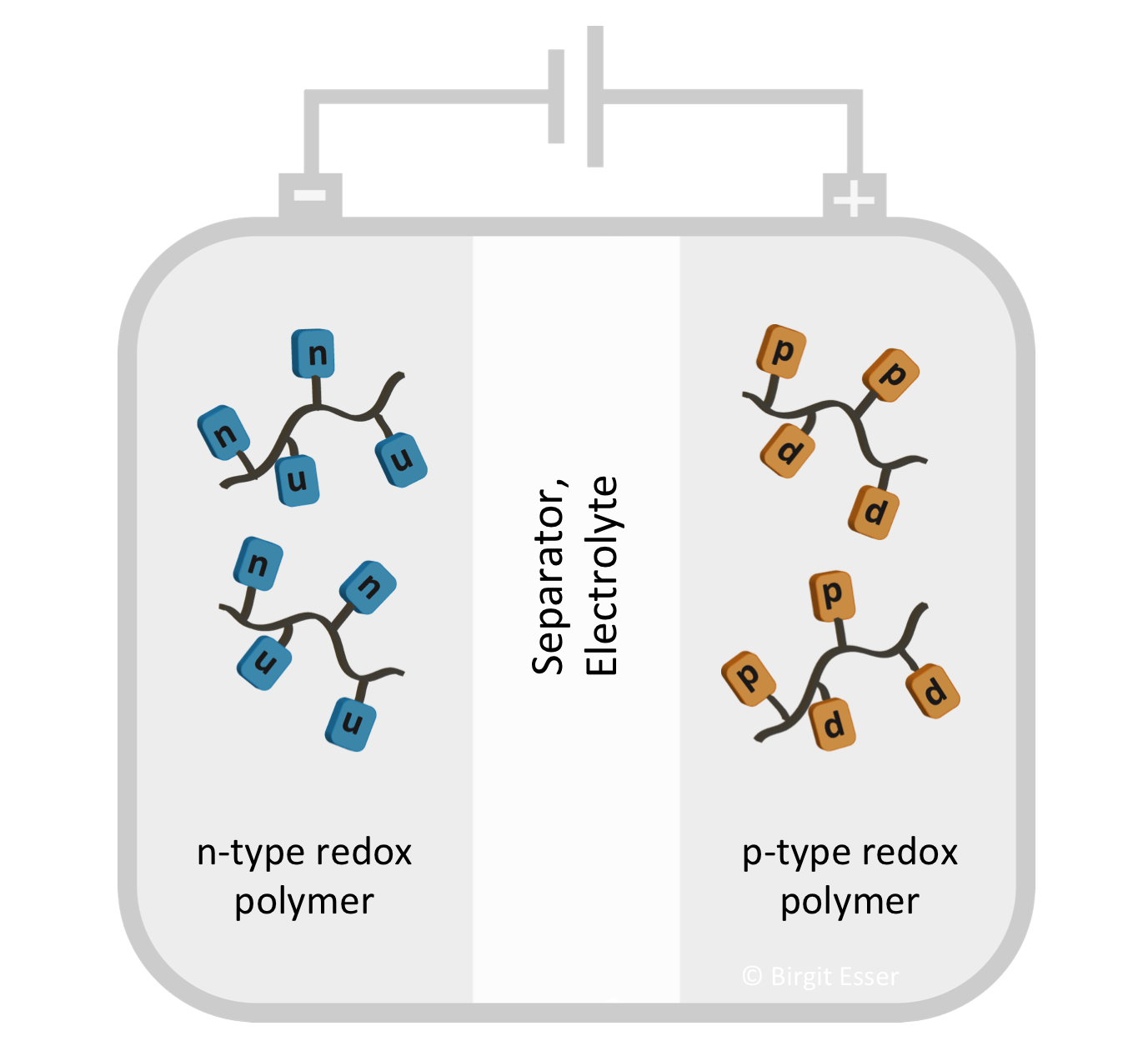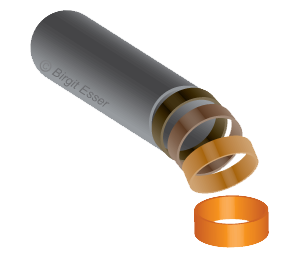Research
Our group is active in four research areas, which are all focused on the design, synthesis, and investigation of functional organic π-systems, supported by quantum chemical calculations.

Organic electrode materials for batteries
Organic electrode materials, such as redox-active polymers, offer the possibility to build flexible plastic batteries. In contrast to common batteries, containing heavy-metal based electrodes, they are renewable and easy to recycle. This part of our research is focused on the development of redox-active organic materials and on their evaluation for reversible charge storage as cathode or anode materials in batteries.
π-Acid-base interactions

π-Acid-base interactions play an important role in the stabilization of supramolecular structures in biological systems and in the detection of electron-poor aromatics. Within this project we investigate the energetics of the interactions between electron-rich, trinuclear gold complexes and electron-poor π-systems by experimental means, supported by quantum chemical calculations and scanning tunneling microscopy measurements.
Spiroconjugated molecules for optoelectronics

In organic light-emitting devices the stability of the active layer is of utmost importance, which largely depends on the morphology of the active material. In order to suppress π-π interactions we design organic emitters, which possess a spiroconjugated framework. The resulting three-dimensional structure minimizes such intermolecular interactions. The spiroconjugated units can either be incorporated into a polymeric structure, or they can be functionalized in such a way that they can be used as small molecule emitters.
Conjugated nanorings and -belts

Carbon nanotubes have attracted scientists since their discovery due to their unique properties such as exceptionally high electrical and thermal conductivity and mechanical stability. Up to date it is not possible to access carbon nanotubes with exact diameter and length. Nanobelts, resulting from cutting slices off of a nanotube, can serve as model systems.
This part of our research aims at synthesizing different types of nanorings and -belts with unique structural design and investigating their properties. These endeavors are accompanied by quantum chemical calculations.
